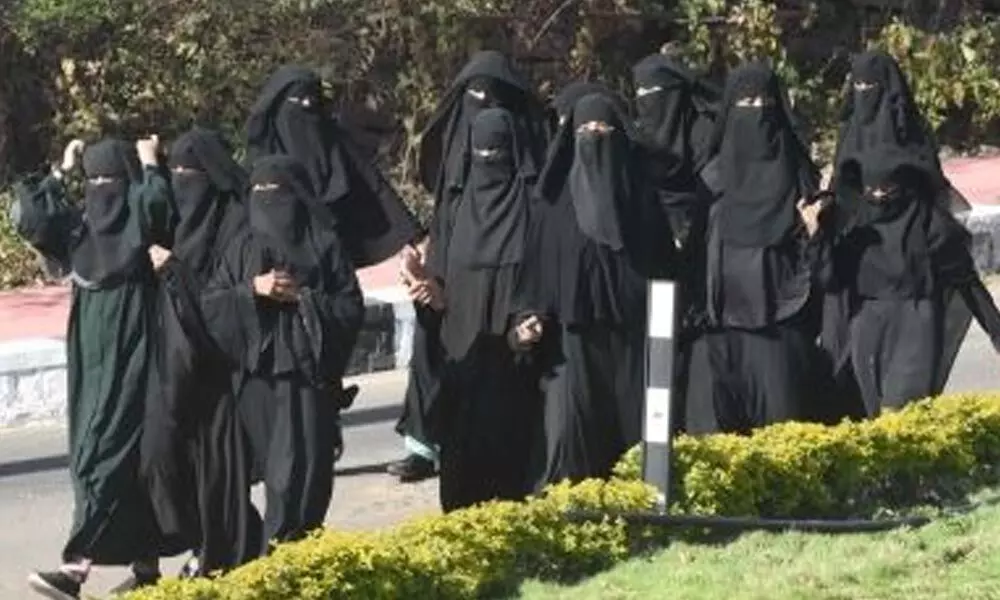A critique of the Hijab judgement

A critique of the Hijab judgement
We all know the story of Nobel Laureate, Malala Yousafzai, the Pakistani hijab-clad girl who took a bullet in her head, just so that she could go to school.
We all know the story of Nobel Laureate, Malala Yousafzai, the Pakistani hijab-clad girl who took a bullet in her head, just so that she could go to school. The plight of Indian Muslim women students in Udupi, Karnataka, is near about the same, who have been asked to choose between their religion or education, in light of the recent judgment passed by the High Court of Karnataka, stating that the "hijab is not an 'essential religious practice in Islam," while also upholding the GO in question which prescribes a uniform to be worn, if prescribed by the schools concerned.
Religiosity of a mandate?
The court has observed that regard being had to the kind of life conditions then obtaining in the region concerned, wearing hijab was recommended as a measure of social security for women and to facilitate their safe access to public domain. It has stated that at the most the practice of wearing this apparel may have something to do with culture but certainly not with religion.
It is hereby relevant to note that of, the various questions of Constitutional importance, in the Sabarimala case which is pending on the issue of entry of women in the temple complex, the Supreme Court shall also decide whether at all courts are to sit in decision over religious practices, belief or faith. But then time and again, as has been observed in various cases in the recent past, that judges have tried to emote clerics in their judgments and have tried to propound the essentiality of various religious practices on the basis of religious scriptures and texts.
This is an unnerving trend which has found its way into the sanctum sanctorum of courts, as has been recently seen in the triple talaaq case, or the Shayara Bano case, where question of maintenance and alimony of the Muslim woman was sought to be answered in light of the Qur'an and associated scriptures of hadis. By way of the latest pronouncement by the Karnataka High Court holding that the "hijab is not an essential religious practice", the Indian Court by entering into the domain of interpretation of religious practices and beliefs has again stepped onto thin ice.
Tinkering with the 1st US Amendment
The High Court has heavily borrowed from Western concepts of freedom of expression and right to conscience and the challenges meted thereto by the idea of 'Secularism', as propounded by the Constitution of India. That it is this reasoning which has to be examined now before the Supreme Court of India, and that whether the court has been correct to place exclusive reliance on the Western and European notions of secularism and individual liberty, and whether the court has been right in its interpretation thereof. For instance, the court in the impugned judgment has sought to draw inference from the famous case of Tinker v. Des Moines Independent Community School District, 393 US 503 (1969). The said case was in fact a landmark decision by the US Supreme Court that defined First Amendment rights of students in US public schools. The Tinker test, also known as the "substantial disruption" test, is still used by courts today to determine whether a school's interest to prevent disruption infringes upon students' First Amendment rights.
The Supreme Court found that the actions of the Tinkers in wearing armbands did not cause disruption and held that their activity represented constitutionally protected symbolic speech. Thus, if any semblance were to be drawn to the facts of the instant case, it can be held that the students in question were only silent practitioners of 'hijab', and never in any way, by their conduct sought to disrupt the functioning if the school.
Cultured Curriculum
The Karnataka High Court has held that schools have the authority to prescribe a curriculum and as such, schools and the educational institutions have the power to insist on a uniform sans any kind of religious attire, apparel or symbol, as directed by the assailed government order. If that be the take, then is the recent decision of the Gujarat government to include the Bhagavad Gita in the school syllabus for Classes 6-12, justified in being advancement of a culture or religious ethos?
A circular issued by the Gujarat state government in this regard said the idea is to "cultivate a sense of pride and connection to traditions". Like a learned submission before the high court, was that if Sikhs can don the turban in the army, then why can't the hijab be accommodated in a conducive and inclusive educational environment. After all a "Shaheed" is returned to his or her abode for last rites, as per the beliefs and religious practices of the martyr's family and that we as a nation take tremendous pride in the tribute to the departed soul's honorary last passage.
In conclusion, there is an old African adage that if you educate a man, you educate an individual; but if you educate a woman, you educate a nation. It remains to be seen what weighs more with the Court: freedom of education irrespective of conscience or belief and or for an exclusive world of education bereft of any real world diversity by means of complete uniformity.
(The author is an advocate-on-record at the Supreme Court of India)















